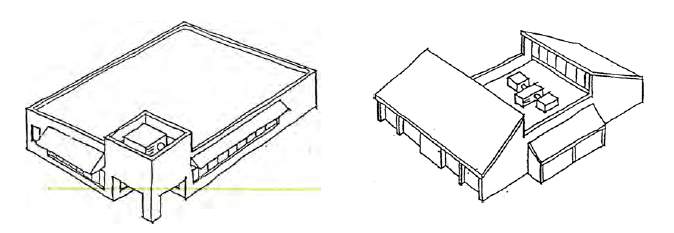Chapter 21.34
INDUSTRIAL DESIGN STANDARDS
Sections:
21.34.040 Supplemental design review procedures.
21.34.050 Review by the Planning Commission Design Review Committee.
21.34.110 Site planning – Relationship to street front.
21.34.115 Site planning – SR 202 frontage.
21.34.120 Site planning – Interior yard compatibility.
21.34.130 Site planning – Multiple building/large lot developments.
21.34.140 Mechanical equipment and service areas.
21.34.150 Site planning – Integration of biofiltration swales.
21.34.190 Open space/recreation.
21.34.200 General pedestrian access requirements.
21.34.210 Internal pedestrian paths and circulation.
21.34.220 Pathways through parking lots.
21.34.230 Pedestrian paths to adjoining uses and transit facilities.
21.34.240 Pedestrian areas at building entries.
21.34.250 Vehicular access and circulation.
21.34.260 Building design – Character.
21.34.270 Architectural scale.
21.34.010 Purpose.
(1) The overall purpose of the industrial design standards is to help implement a vision that the City and those who develop in the City have a common interest in assuring quality development that benefits property owners and the City.
(2) These design standards are intended to:
(a) Apply to industrial designated property within the City;
(b) Allow for flexibility to accommodate creative design that meets intent of adopted principles; and
(c) Encourage design review that parallels development design for economy of design resources. (Ord. 737 § 2 (Att. A), 2022)
21.34.020 Applicability.
(1) All new construction within the I and I/T zones shall be subject to the industrial design standards in this chapter.
(2) Alteration of any structure that affects its exterior appearance shall be subject to design review under this chapter.
(3) The City has established two thresholds to gauge the extent the requirements of this chapter shall be applied based on what is practical and reasonable for that level of improvement.
(a) If 50 percent or more of a building or structure subject to design review is altered within a period of three years, the structure shall be subject to the applicable requirements that do not involve repositioning the building or reconfiguring site development as determined by the Director.
(b) If less than 50 percent of a building or structure subject to design review is altered within a period of three years, the requirement is only that the proposed improvements meet the standards and/or guidelines and do not lead to further nonconformance with the standards and guidelines. For example, if a property owner decides to replace a building facade’s siding, then the replacement siding shall meet the applicable exterior building material and color standards and/or guidelines, but elements such as building modulation would not be required. (Ord. 737 § 2 (Att. A), 2022)
21.34.030 Interpretation.
(1) Where there is a conflict between these design standards and other City plans, policies, and regulations, the most specific standard, guideline, or regulation shall apply, as determined by the Director. For example, this title provides for a minimum street setback of 10 feet in industrial zones, whereas the design standards allow buildings to be placed on the front property line as long as they meet certain design requirements. While the design standards herein are less restrictive in this case, they are more specific in that they allow for zero setbacks if certain conditions are met; therefore, the Director will determine they apply.
(2) Each section of the design standards contains a list of “intent” statements followed by “design principles” and subsequent implementing measures. Specifically:
(a) Intent statements are overarching objectives. For example, the intent statement for the “building corners” section is to “create visual interest and increased activity at street corners.” Project applicants must be able to demonstrate how their project meets the intent, to the Director’s satisfaction.
(b) Design principle statements describe broad actions that are necessary to achieve the intent.
(c) A collection of standards implements the design principles. Specifically:
(i) Standards that use words such as “shall,” “must,” “is/are required,” or “is/are prohibited” signify required actions.
(ii) Some standards take a “toolbox” approach, in that a development may be required to include at least two design elements from a large list of options.
(iii) Standards using words such as “should” or “is/are recommended” signify recommended actions that are meant to be applied with some flexibility. Development projects must comply with such measures unless the development proposal meets the intent in some other manner, as determined by the Director.
(d) Furthermore, this chapter contains some specific standards that are easily quantifiable, while others provide a level of discretion in how they are complied with. In the latter case, the applicant must demonstrate to the Director, in writing, how the project meets the intent of the standard. (Ord. 737 § 2 (Att. A), 2022)
21.34.040 Supplemental design review procedures.
The following procedures shall be applied in combination with the procedures set forth in Chapters 21.80 through 21.84 WMC:
(1) When an applicant submits a development application that triggers design review, the design review shall be combined with review of the applicable project permit application consistent with WMC 21.80.040, unless the applicant requests a standalone design review process.
(2) No project approval shall be granted, no building permit issued, and no construction shall begin until the design review decision becomes final pursuant to WMC 21.80.190.
(3) With submittal of the building permit application, the Director shall determine that the final design is consistent with the issued design decision. (Ord. 737 § 2 (Att. A), 2022)
21.34.050 Review by the Planning Commission Design Review Committee.
(1) The Planning Commission Design Review Committee shall review and make a recommendation to the Director on all proposed design reviews involving a request for a Director-authorized departure from the design standards.
(2) The review and recommendation of the Design Review Committee shall be based on whether the proposal is consistent with the intent statements applicable to the design standard for which the departure is requested. (Ord. 737 § 2 (Att. A), 2022)
21.34.110 Site planning – Relationship to street front.
(1) Intent. The intent for street fronts is:
(a) To upgrade industrial areas to improve aesthetics by establishing a positive visual identity for industrial areas;
(b) To unify streetscapes; and
(c) To enhance valley vistas in the industrial zones.
(2) Design Principles.
(a) Partially screen surface parking lots. Surface parking located on the front side of buildings and visible from a public right-of-way shall be separated from the public right-of-way by a landscaping screen at least 10 feet wide as described in WMC 21.36.080 or another treatment as approved by the Director that partially screens the view of the parking. See Figure I-1.
(b) Enhance roadway edge for sites with sales in front yard (e.g., materials storage). Outdoor sales areas located on the front side of buildings and visible from a public right-of-way shall be screened with Type 2 landscaping in accordance with WMC 21.36.060 of at least 10 feet wide or another treatment as approved by the Director that enhances the street frontage. All sales areas visible from a street, residential zoned or residentially developed areas, and public recreation facilities (e.g., public parks or trails) shall be paved with an all-weather surface such as asphalt, concrete, unit paving, or decking, or be landscaped with living plant materials. See Figure I-2.
(c) Screen outdoor storage and industrial activities. Outdoor storage areas and industrial activities shall be screened from public view with Type 1 landscaping at least 10 feet wide in accordance with WMC 21.36.060. See Figure I-3.
(d) Screen all chainlink fences. Chainlink fences shall be screened with Type 1 landscaping in accordance with WMC 21.36.060 or an alternative treatment approved by the Director.
(e) Provide “gateway entrance/welcome” signs.
(i) Provide entry signs that identify the business establishment with address numbers readable from approach direction (or directions) of the access right-of-way.
(ii) Provide on-site directional signs to direct motorized vehicles to appropriate parking or delivery areas pursuant to Chapter 21.44 WMC.
(iii) Provide signs that should direct arriving vehicles and that distinguish access for smaller vehicles (e.g., passenger cars) from access for large vehicles (e.g., semi-truck/trailers) at entry or on site.
(f) Parking areas will be paved with asphalt or concrete. See Figure I-1.
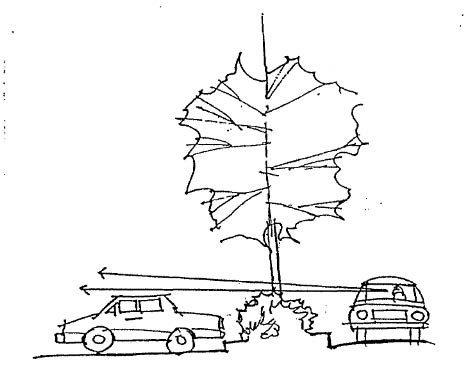
Figure I-1. Sites with parking in the front yard, trees and low shrubs will screen parking but allow view to businesses.

Figure I-2. Sites with sales activities in the front yard, street trees trimmed high and low bollards allow full view of merchandise.
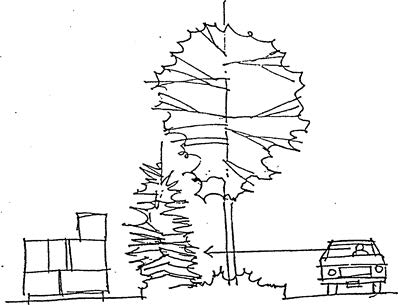
Figure I-3. Sites with outdoor storage or industrial activities, a full screen will prevent views into unsightly areas.
(Ord. 737 § 2 (Att. A), 2022)
21.34.115 Site planning – SR 202 frontage.
All development with street frontage on SR 202 shall be subject to the City’s pedestrian-oriented streets commercial design standards set forth in Chapter 21.33 WMC. (Ord. 737 § 2 (Att. A), 2022)
21.34.120 Site planning – Interior yard compatibility.
(1) Intent. The intent for interior yard compatibility is:
(a) To promote functional and visual compatibility between adjoining properties;
(b) To provide a more aesthetic character in the I and I/T zones; and
(c) To increase the efficacy of biofiltration.
(2) Design Principles. Establish a biofiltration swale and greenrows between adjoining properties.
(a) Provide a “greenrow” at least 20 feet down both sides of the property (side yards). A biofiltration swale may be located in the greenrows. The total dimension of the swale and greenrow must be sufficient for the trees to achieve their natural spread and provide the swale sufficient gradient, surface area, and sunlight to function. Therefore, the width of the greenrow/swale may vary, depending on the species of trees and swale configuration.
(b) Two adjoining property owners may collaborate to provide a swale and greenrow. For example, if a swale/greenrow requires 36 feet, each property owner can provide 18 feet and share the construction costs. In this case, the swale must be sufficient to filter surface water from both sites.
(c) See Figure I-4.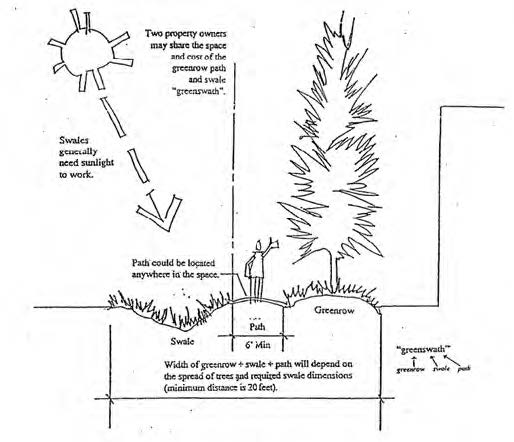
Figure I-4. Description of greenbelt, swale, and path dimensions and requirements.
(Ord. 737 § 2 (Att. A), 2022)
21.34.130 Site planning – Multiple building/large lot developments.
(1) Intent.
(a) To reduce the negative impacts to adjacent properties and the natural environment.
(b) To increase pedestrian, bicycle, and vehicular circulation options in the Industrial and Tourist-Industrial zones.
(c) To upgrade the overall visual quality in Industrial and Tourist-Industrial zones.
(d) To take advantage of special opportunities for incorporating natural features into site design, such as Little Bear Creek and the Sammamish River.
(e) To produce a consistent design identity compatible within each of the industrial areas.
(f) To take advantage of special opportunities to create a composition of buildings and landscape features.
(g) To preserve and enhance visual corridors in the City.
(2) Design Principles. See Figure I-6.
(a) Take advantage of special opportunities and mitigate impacts of large developments. The site planning for all developments over five acres must demonstrate a unifying, organized design that:
(i) When the site is near Little Bear Creek and/or the Sammamish River, provide convenient pedestrian circulation to these waterways;
(ii) Where possible, incorporate screening, environmental mitigation, utilities, and surface water drainage as positive elements (e.g., create a “natural” open space or wet pond as a site feature to accommodate surface water runoff – chainlinked fences around ponds are discouraged), see Figure I-5; and
(iii) Screen or locate services away from public view and nearby sites.
(b) Take precautions to mitigate negative impacts of industrial development on adjoining and/or surrounding properties. Site planning for industrial development shall consider adjoining and/or surrounding uses and exercise care to locate incompatible uses from adjoining uses.
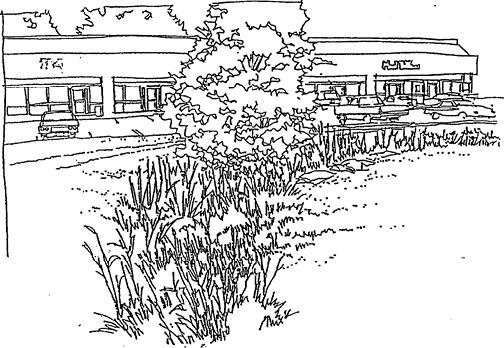
Figure I-5. Biofiltration swales can incorporate stormwater management in soft, attractive, naturalistic way.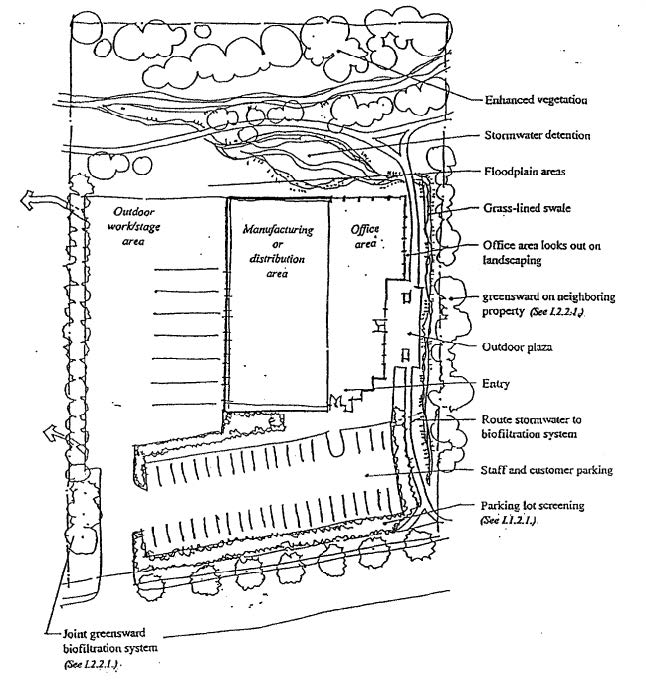
Figure I-6. Example site plan illustrating how a joint manufacturing/distribution business can achieve efficient site use, amenities, and site design objectives.
(Ord. 737 § 2 (Att. A), 2022)
21.34.140 Mechanical equipment and service areas.
(1) Intent.
(a) To reduce the visibility of unsightly uses (e.g., trash containers, product storage) in the Industrial zones.
(b) To encourage more thoughtful siting of trash containers and service areas, balancing the need for service with the desire to screen negative aspects.
(c) To minimize adverse, olfactory, auditory, or visual impacts of mechanical equipment and service areas.
(2) Design Principles. Reduce impact of service areas and mechanical equipment.
(a) When feasible, locate service areas (loading docks, trash containers, compactors, mechanical equipment, and storage yards) to avoid negative visual, auditory (noise), or physical impact on the street, SR 522 freeway, and adjoining residentially zoned or developed properties, as well as Little Bear Creek and the Sammamish River. One of the purposes of this principle is to reduce the noise impacts of service areas. When, because of the steep topography or other physical site constraints, it is not feasible to so locate service areas, provide screening pursuant to subsection (2)(b) of this section.
(b) Service elements shall be screened when the elements are visible from the public street or sidewalk, adjoining properties, residentially zoned or developed areas, and recreational facilities (e.g., public parks and trails). Trash collection facilities, refuse, and recycling collection points shall be screened in accordance with WMC 21.40.020(6).
(c) Screening of mechanical equipment shall be done so that it blends with the architecture of the building. See Figure I-7.
(d) Locate and/or screen utility meters, electrical conduit, and other service and utilities apparatus so as not to be visible from the street. This is intended to include public utilities along the street, where feasible.
(e) Locate and/or install sound attenuation measures as necessary so that exterior mechanical equipment does not exceed noise standards in Chapter 8.08 WMC.
Figure I-7. Mechanical equipment and service areas should be screened from view.
(Ord. 737 § 2 (Att. A), 2022)
21.34.150 Site planning – Integration of biofiltration swales.
(1) Intent.
(a) To encourage attractive treatment of biofiltration swales.
(b) To incorporate biofiltration swales and ponds into project site design and landscaping more effectively.
(c) To enhance the water quality of Little Bear Creek and the Sammamish River.
(2) Design Principles. Maximize biofiltration of surface water prior to its flow into Little Bear Creek and the Sammamish River. See Figure I-8.
(a) Where practical based on-site topography, direct water to the side of the lot in such a manner as to provide the maximum length and effectiveness of the biofiltration swale. Wet ponds or other surface water treatment facilities may be required.
(b) Where possible, locate the biofiltration swale adjoining to or near a greenrow for maximum effect.
(c) Depending on site topography, swales located along sides of the property may be required to channel surface water runoff. Cooperation with adjoining development to complement like facilities is encouraged.
(d) Joint use of biofiltration facilities meeting acceptable water quality design measures is encouraged.
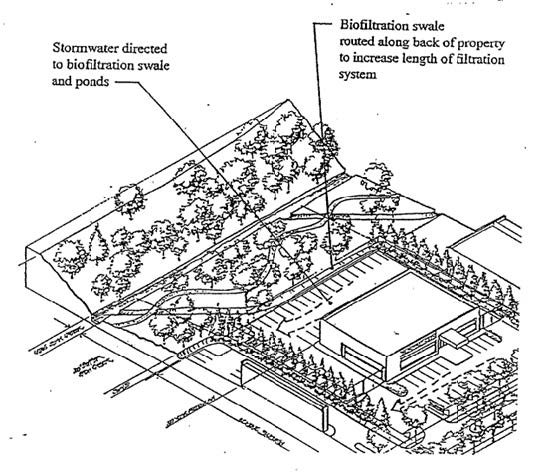
Figure I-8. Maximize biofiltration system effectiveness.
(Ord. 737 § 2 (Att. A), 2022)
21.34.160 Street corners.
(1) Intent.
(a) To enhance “gateways” to each of the industrial areas.
(b) To upgrade the industrial area’s visual identity.
(2) Design Principles. Enhance the visual quality of development at principal and/or minor arterial street intersections. New development on any of the corners of a principal and/or minor arterial street intersection must enhance the property’s visual qualities at the corner by one or more of the following:
(a) Incorporate human scale elements set forth in WMC 21.34.290.
(b) Install at least 200 square feet of ground surface landscaping with native trees and shrubs or living ground cover at or near the corner of the lot.
(c) Install a decorative screen wall at least two feet six inches high, a trellis, or other continuous architectural element, with a length of at least 20 feet, along the front property line.
(d) Other element or method approved by the Director. (Ord. 737 § 2 (Att. A), 2022)
21.34.170 Site lighting.
(1) Intent.
(a) To encourage the use of uniform lighting with concealed lighting sources as an integral design component to enhance buildings, landscaping, or other site features.
(b) To encourage night sky’s visibility and to reduce the general illumination of the sky in Woodinville.
(c) To reduce horizontal light glare and vertical light trespass from a development site onto adjacent parcels and natural features.
(d) To encourage the judicious use of lighting in conjunction with other security methods to increase site safety.
(e) To discourage the use of lighting for advertising purposes.
(2) Design Principles. Provide adequate lighting levels in all areas used by pedestrians or automobiles, including building entries, walkways, parking areas, circulation areas, and other open space areas. New development shall provide site lighting that meets the following design criteria:
(a) All public areas shall be lighted with average minimum and maximum levels as follows:
(i) Minimum (for low or nonpedestrian and vehicular traffic areas): 0.5 foot-candles;
(ii) Moderate (for moderate or high-volume pedestrian areas): one to two foot-candles; and
(iii) Maximum (for high volume pedestrian areas and building entries): four foot-candles.
(b) Lighting shall be provided at consistent levels, with gradual transitions between maximum and minimum levels of lighting and between lit areas and unlit areas. Highly contrasting pools of light and dark areas shall be avoided.
(c) Parking lot lighting fixtures shall be nonglare and mounted no more than 25 feet above the ground. All fixtures over 15 feet in height shall be fitted with a full cut-off shield.
(d) Pedestrian-scaled lighting is encouraged in areas of pedestrian activity.
(e) Lighting shall enable pedestrians to identify a face 45 feet away to promote safety.
(f) Lighting shall not be permitted to trespass on to adjoining parcels or rights-of-way. Nor shall light source (luminaire) be visible at the property line.
(g) All building lights shall be directed onto the building itself and/or the ground immediately adjoining to it. The light emissions should not be visible above the roofline of the building.
(h) Light fixtures other than traditional cobra heads are encouraged. (Ord. 737 § 2 (Att. A), 2022)
21.34.180 Site landscaping.
(1) Landscape Concept.
(a) Intent. To define plant species that are attractive, provide multiseasonal interest, require low maintenance, are resistant to drought, and are otherwise appropriate for conditions within the Industrial districts.
(b) Design Principles. Develop a site landscape design concept that should be suitable and fitting with the character of Woodinville as a community bordering rural and agricultural areas. Existing substantive vegetation and native materials in informal plantings and arrangements should be considered in the concept. See Figure I-9.
(i) At a minimum, the landscape concept should include greenrows and surface water biofiltration features.
(ii) Screen development from SR-522, SR-202 and/or other public ways and enhance vegetation in the Sammamish River and Little Bear Creek corridors.
(iii) Plantings and/or site features should be scaled to larger industrial structures and enhance the architectural qualities of buildings.
(iv) In addition, the concept should consider the following landscape design objectives where appropriate:
(A) Coordinate the selection of plant material to provide a succession of blooms, seasonal color, and a variety of texture.
(B) Provide a transition in landscaping design between adjoining sites, within a site, and from native vegetation areas in order to achieve greater continuity.
(C) Design landscaping to create definition between public and private spaces.
(D) Design landscaping to provide a transition between built structures (vertical planes) and the site (horizontal planes).
(E) Use plantings to accent and highlight significant site features and to define the function of the site, including parking, circulation, entries, and open space.
(2) Preferred Plant Material.
(a) Intent.
(i) To encourage the use of hardy, attractive, and easily maintained plant material that provides multiseasonal interest and is of appropriate height to avoid overhead wires and negative impacts on public safety.
(ii) To provide visual continuity by using plant materials from a City-specified plant list of a limited number of native varieties and species.
(iii) To encourage the use of trees and shrubs as an important unifying element within the industrial areas to strengthen the image and continuity of the streetscape.
(b) Design Principles.
(i) Plantings along the frontage shall be coordinated to unify the roadway image.
(ii) Selected plant materials from the City of Woodinville’s list of trees and shrubs shall be used to satisfy landscape requirements to provide visual continuity along the roadway.
(iii) Plantings along the north sides of buildings and in other shady locations shall use shade-tolerant plant materials from the City of Woodinville’s tree and shrub list.
(3) Retention of Significant Trees.
(a) Intent.
(i) To create and retain public open space that provides adequate access to the community.
(ii) To preserve and protect stands of mature trees.
(iii) To aid in the stabilization of soil by preventing erosion.
(iv) To reduce stormwater runoff and costs associated with it.
(v) To provide an important visual buffer and screen from traffic.
(vi) To conserve and enhance the aesthetic value of the area and protect and increase property values.
(vii) To provide natural settings for paths connecting industrial areas with transit stops.
(b) Design Principles.
(i) Adhere to the requirements of Chapters 21.50 and 21.36 WMC.
(ii) Consider alternative building and parking siting strategies to preserve existing trees.
(iii) Consider the integration of pedestrian and bicycle paths with stands of mature trees where feasible to connect adjacent uses.
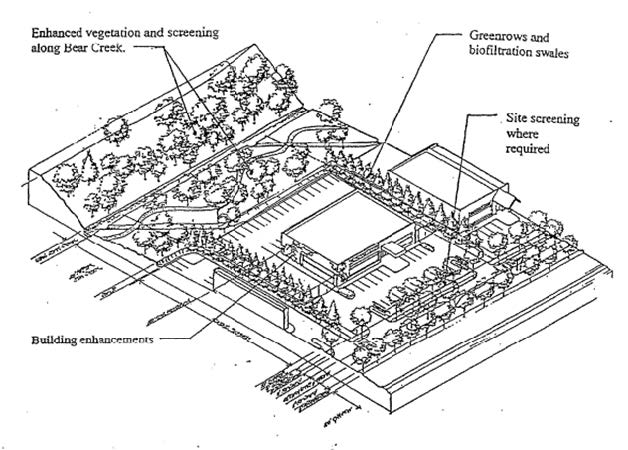
Figure I-9. Elements of a landscape design concept.
(Ord. 737 § 2 (Att. A), 2022)
21.34.190 Open space/recreation.
(1) Intent. To promote on-site facilities that create amenities to enhance the workplace environment and blend adjacent natural amenities with the created open space.
(2) Design Principles. Preserve recreation and habitat opportunities along the Sammamish River and Little Bear Creek.
(a) Encourage businesses to provide on-site open space for employees adjacent to public trails along the Sammamish River and Little Bear Creek.
(b) Provide benches and trash cans where appropriate for pedestrian uses on industrial sites. These amenities may be provided off site when it benefits the public as determined by the Director.
(c) Encourage property owners to provide public access where feasible to the Sammamish River and Little Bear Creek. (See WMC 21.73.040 for shoreline master program public access requirements when development is in the shoreline jurisdiction.) (Ord. 737 § 2 (Att. A), 2022)
21.34.200 General pedestrian access requirements.
(1) Intent.
(a) To support the City’s efforts to establish a trail along Little Bear Creek and the Sammamish River as part of its comprehensive bicycle/pedestrian network.
(b) To provide safe, pleasant, and continuous pedestrian access in the industrial areas of Woodinville.
(c) To provide safe pedestrian routes across busy streets by a variety of means, including signalized intersections at driveways with heavy traffic volumes and distinctively marked crosswalks.
(2) Design Principles.
(a) Provide pedestrian connections from street walks to the pedestrian trail along the Sammamish River according to parks and trails standards of the City.
(b) Provide obvious pedestrian crossing access where feasible for streets abutting the site.
(c) Develop an on-site pedestrian circulation plan that follows WMC 21.37.130. Walkways should be integrated with the required parking lot landscaping. See Figure I-10.
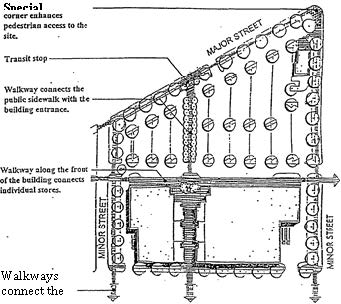
Figure I-10. In this industrial site, landscaped walkways provide pedestrian connections.
(Ord. 737 § 2 (Att. A), 2022)
21.34.210 Internal pedestrian paths and circulation.
(1) Intent. To provide safe, convenient, on-site pedestrian circulation.
(2) Design Principles.
(a) Provide a paved pedestrian path from the street sidewalk to the main entry of all buildings.
(i) Buildings with entries not facing the street should have a clear and obvious pedestrian accessway from the street sidewalk to the entry. This path should be separate from vehicular traffic pursuant to WMC 21.37.130(5)(a).
(ii) The pedestrian path from the street sidewalk to the building main entry shall be at least 60 inches wide (preferably 96 inches wide) pursuant to WMC 21.37.130(5)(b).
(b) Provide clearly delineated pedestrian paths or walkways connecting all businesses and the entries of multiple buildings on the same development site as required by WMC 21.37.130.
(c) Integrate on-site pedestrian walks with site landscaping plans. See Figure I-10. (Ord. 737 § 2 (Att. A), 2022)
21.34.220 Pathways through parking lots.
(1) Intent. To provide safe pedestrian paths through parking areas.
(2) Design Principles. Provide pathways through parking lots used by business patrons and members of the public.
(a) The following distance should be considered somewhat flexible to account for the length of the parking lot and driveway locations. A specially marked or paved crosswalk must be provided through parking lots greater than 150 feet long (measured parallel to the street front) or more than two bays deep (approximately 75 feet measured perpendicular from street front) in accordance with WMC 21.37.130(4).
(b) Generally, walkways should be provided. A maximum distance of 150 feet shall be maintained between paths. See Figures I-10 and I-11.
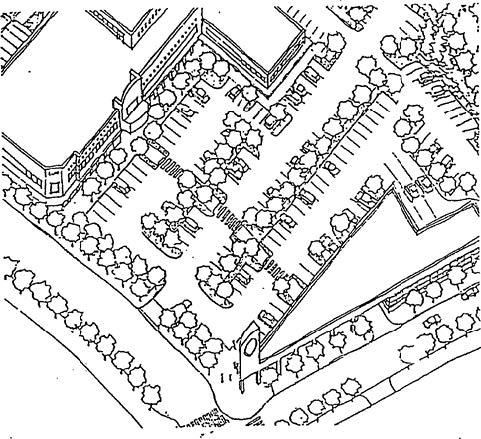
Figure I-11. Pedestrian circulation through parking lots is an important consideration.
(Ord. 737 § 2 (Att. A), 2022)
21.34.230 Pedestrian paths to adjoining uses and transit facilities.
(1) Intent.
(a) To provide safe and continuous pedestrian access in industrial areas.
(b) To minimize conflict between pedestrians and vehicular traffic.
(c) To provide safe routes for the pedestrian and disabled person across parking, to entries, and between buildings.
(d) To provide pedestrians with access to adjoining properties.
(e) To provide continuous pedestrian and bike access to transit stops.
(2) Design Principles.
(a) Provide feasible, pedestrian circulation routes in accordance with WMC 21.37.130 from building entries of businesses to:
(i) Services within the same development;
(ii) Sidewalks along abutting roadways; and
(iii) Integrate pathways and bike trails to transit areas. See Figure I-10 for an example.
(b) Where possible, provide steps and ramps across retaining walls and slopes in accordance with and in addition to WMC 21.37.130.
(c) Gates should be provided to breech fences if they impede pedestrian movement to transit, public trails, and other public areas.
(d) Pedestrian paths must be safe and well lit.
(e) In addition to WMC 21.40.060, landscaping shall not block visibility to and from a path, especially where it approaches a roadway or driveway.
(f) In addition to WMC 21.37.110, integrate transit stops into the development of adjoining site improvements. This may be done by providing extra space for waiting areas, incorporating bus pull outs or stops into the site’s circulation scheme, and/or providing a walkway (preferably covered) directly from the transit stop into the project’s entrance. Pavement for expanded waiting areas and connection walkways may be located within required setbacks and may count as landscape areas, provided the areas meet the intent prescribed in subsection (1) of this section.
(g) Incorporate access to public open spaces where a site is adjoining to public open spaces. (Ord. 737 § 2 (Att. A), 2022)
21.34.240 Pedestrian areas at building entries.
(1) Intent.
(a) To use the architectural elements of a building and landscaping to highlight and define the entrance.
(b) To enhance the visual character of buildings.
(c) To improve the pedestrian environment.
(2) Design Principles. Enhance the building access by having primary public entries on all industrial businesses incorporate two or more of the following:
(a) Provide weather protection, such as an awning, canopy, marquee, or other building element, to create a covered pedestrian open space of at least 100 square feet. See Figure I-12.
(b) Provide at least 200 square feet of landscaping at or near the entry.
(c) Provide bicycle parking according to WMC 21.37.090.
(d) Provide a trellis, canopy, porch, or other building element that incorporates landscaping.
(e) Provide building ornamentation, such as mosaic tile, relief sculpture, ornamental wood, metal trim, etc.
(f) Other methods as approved by the Director.
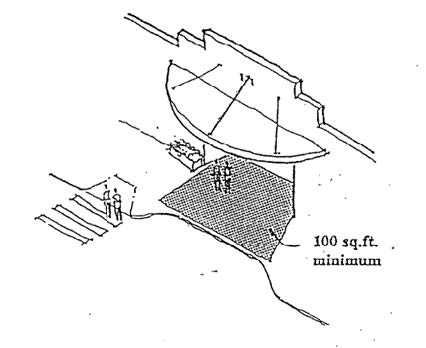
Figure I-12. Provide a covered pedestrian open space (100 square feet minimum) adjoining to each entry of industrial buildings facing parking lots.
(Ord. 737 § 2 (Att. A), 2022)
21.34.250 Vehicular access and circulation.
(1) Intent.
(a) To provide safe, convenient access to commercial sites without diminishing pedestrian and visual qualities.
(b) To locate entrances for large vehicles (semi-trucks), where feasible, away from pedestrian and other small vehicle (passenger cars) entrance.
(2) Design Principles. Minimize driveway impacts.
(a) Parking lot entrances, driveways, and other vehicle access routes onto private property from a public right-of-way shall be restricted to no more than one entrance lane and one exit lane per 300 linear feet of property line, as measured horizontally along the street face.
(b) Properties with less than 300 linear feet of street frontage shall be limited to one entry and one exit lane for vehicle access.
(c) Driveway lanes crossing a public sidewalk shall be no wider than 13 feet per entry or exit lane.
(d) The City may impose additional restrictions to parking lot and vehicle access point location to reduce impacts to public safety, pedestrian movement, on-street vehicle circulation, and visual qualities.
(e) Additional entrance and exit lanes may be permitted as follows:
(i) Additional entrances or vehicle access lanes do not significantly impact vehicle circulation, public safety, pedestrian movement, or visual qualities;
(ii) Additional driveways or vehicle access lanes allows parking lot design that reduces the traffic impacts of the parking lot;
(iii) Corner lots may have one entrance per street, provided the owner proves that it is unable to arrange joint access with an abutting property; or
(iv) Other reasons acceptable to the City subject to a traffic report supporting the additional entrance or exit.
(f) The following are encouraged:
(i) Driveways on adjoining development sites are encouraged to be located at least 300 or more feet from one another for access control. By maintaining this spacing, the number of curb cuts should be kept to a minimum and thereby contributing to the reduction of local traffic impacts.
(ii) To allow for vehicular access, shared driveways are encouraged.
(iii) Vehicular access to corner lots shall be located on the lower classified roadway and as close as practical to the property line most distant from the intersection. Location of vehicle access to streets shall be subject to City street standards. By encouraging vehicular access to be on a side street to an arterial, and as far as possible from the intersection, potential conflicts with traffic should be reduced. (Ord. 737 § 2 (Att. A), 2022)
21.34.260 Building design – Character.
(1) Intent. To visually integrate large industrial structures into the community when viewed from City streets and from residential areas that overlook industrial areas.
(2) Design Principles. Industrial buildings with a building height in excess of 24 feet, longer than 100 feet in overall length, and visible from a public street, trail, path, or open space, shall incorporate measures as follows:
(a) Landscaped area(s):
(i) Of at least 200 square feet spaced not more than 50 feet apart with the edge closest to the building not more than 10 feet from the building; and
(ii) Having not less than three large scale trees that will attain a height of not less than 20 feet within three years. See Figure I-13.
(b) The requirements of subsection (2)(a) of this section may be altered where loading dock openings occur. The loading dock opening may substitute for the landscaped areas, provided the opening meets the following criteria (See Figure I-14):
(i) The opening design element is not less than 75 percent of the full wall height between the finished grade and the top of where the wall intersects the roof;
(ii) The opening is a unified design that incorporates the opening with any adjoining wall treatment and weather protection overhang; and
(iii) The designed opening extends from finish grade with the top of the opening design element extending to not less than one-fourth of the wall height from the top of the wall.
(c) Incorporate wall treatments so the maximum area of a blank wall is less than 600 square feet. (See WMC 21.34.310, Blank walls.) The following treatments may be used to meet the blank wall requirement:
(i) Articulate a vertical panel join that is visible from a 200-foot distance. See Figure I-15.
(ii) Incorporate wall finish color that is integral to the finish material (not painted on) in a pattern or composition with no component panel having an area greater than 200 square feet. See Figure I-16.
(iii) Provide a textured composition wall panel with no single textured element of the composition greater than 200 square feet. See Figure I-17.
(d) In addition, the requirements of WMC 21.34.310 must be met if the blank wall is visible from a public street, public park or trail, residential area, or is within 20 feet of the street right-of-way. These requirements are supplemental to, and do not replace, the underlying Industrial zone height limits set forth elsewhere in this title.

Figure I-13. Buildings screened by trees.

Figure I-14. Incorporating loading docks.
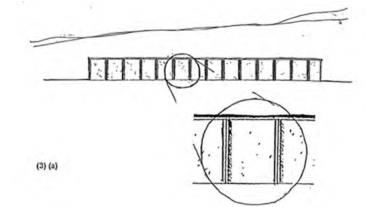
Figure I-15. Blank wall treatment.
Figure I-16. Altering 200-square-foot color patterns.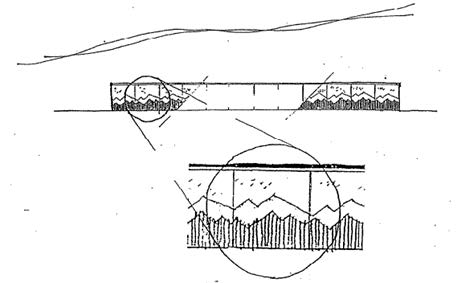
Figure I-17. Altering 200-square-foot texture patterns.
(Ord. 737 § 2 (Att. A), 2022)
21.34.270 Architectural scale.
(1) Intent.
(a) To encourage industrial development and redevelopment to be compatible with adjacent areas’ architectural size and character.
(b) To encourage human scale where structures accommodate pedestrians such as entries, public walks, and trails, etc.
(2) Design Principles. Reduce the apparent scale of industrial buildings as perceived by the public. Industrial buildings are inherently large structures designed to house activities that require large volumes. Industrial buildings are to incorporate measures to integrate new and redeveloped industrial structures with existing nearby uses that are not industrial in character. All new or redeveloped industrial structures shall incorporate at least two of the following:
(a) Reduce the height of industrial structures within 150 feet of residential zoned property to not more than 18 feet.
(b) Reduce the height of industrial structures facing the street to 24 feet within 100 feet of the street or incorporate awnings, sunshades, or other window treatments not more than 24 feet to the top of the treatment from finish grade across the building elevation facing the street.
(c) There shall be no blank walls in excess of 200 square feet on building elevations facing the street. (See WMC 21.34.310 for additional guidelines regarding blank walls.)
(d) Include sloped roofs over lower building elements facing the street. (Ord. 737 § 2 (Att. A), 2022)
21.34.280 Human scale.
(1) Intent. To recognize human interaction with industrial buildings and encourage buildings to comfortably relate elements commonly used by people to the size of the human body.
(2) Design Principles. Incorporate human scale building elements in all new and redeveloped industrial buildings.
(a) Provide weather protection at all entries designed for people.
(b) Provide at least 200 square feet of sidewalk area of pedestrian-oriented open space at the principal entry(s) of industrial buildings.
(c) Comply with accessibility requirements at the principal entry(s) of the building. (Ord. 737 § 2 (Att. A), 2022)
21.34.290 Building details.
(1) Intent. To ensure that buildings are visually interesting when viewed from a public street.
(2) Design Principles. Enhance buildings with appropriate details.
(a) When large scale buildings are viewed from one-quarter to one-half mile or more, the most noticeable elements are contrasting colors and forms of building components. Contrasting colors of the roof and exterior walls of a structure are very noticeable when viewed from above the roof level. Roof-mounted mechanical equipment and ducting, usually light color, are most noticeable on a dark roof. Roofs and roof-mounted equipment are often not as carefully considered for design considerations as are building components visible from street or site level.
(b) Special consideration is to be given to all building components for design in the industrial areas because these zones are so visible from residential areas overlooking the areas.
(c) When buildings are seen from a distance of approximately one city block, the most noticeable qualities are the overall form and color. A three-story commercial building that is 100 feet wide and 35 feet tall must be observed from at least 200 feet away in order for the building to fit within a person’s cone of vision so its overall shape can be perceived. At that distance, windows, doors, and other major features are clearly visible. However, within 60 feet to 80 feet from the building (approximately the distance across a typical downtown street), a person notices not so much the building’s overall form as its individual elements. Closer, the most important aspects of a building are its design details, texture of materials, quality of its finishes, and small, decorative elements.
(d) All new buildings shall include on the facade visible from the public street, residentially developed or zoned areas, public recreational spaces, or freeway at least three of the following:
(i) An entryway that is set back to provide a protected entry or that includes a porch, canopy, or pedestrian covering.
(ii) Canopy, awning, or porch over at least 50 percent of the length.
(iii) Landscaped trellises, screens, or similar treatment over at least 20 percent of the facade wall surface area, excluding windows and doors.
(iv) Varied courses or panels of materials.
(v) An exposed structural framework or other element.
(vi) Articulated wall panels with accentuated joints, edges, or reveals visible from the street.
(vii) Articulated roofline or building base.
(viii) Transparent fenestration (windows, doors, or other openings) over at least 20 percent of the building.
(ix) See Figure I-18 for examples.
(e) All new buildings visible from residential developments on higher elevations of the valley walls overlooking industrial areas shall demonstrate measures incorporated in the building design to enhance the appearance of roofs that include the following:
(i) Color of roofing materials in comparison with exterior wall finishes including the roof side of parapet walls.
(ii) Indicate location and plan configuration, color, and profile above roof level of all roof-mounted equipment visible from an elevation above roof level and describe measures incorporated to enhance the appearance of said equipment by screening or camouflage.
(iii) The visual transition of the joining of a building to the site is critical. The abrupt joining of the vertical wall plane with a horizontal hard, paved surface, without transitional space and landscaping is awkward visually, for use of the paved surface (a walk) and for maintenance.
(f) All new buildings shall provide a minimum four-foot landscape space between the exterior wall and horizontal paved surfaces except at entrances/exits, loading docks and service entries.
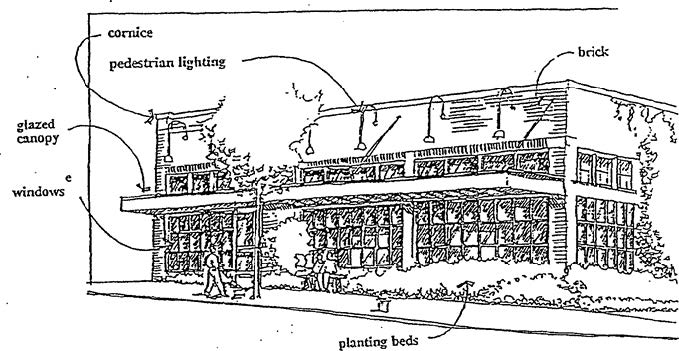
Figure I-18. Even simple buildings can feature a number of functional design details that increase a building’s attractiveness and efficiency.
(Ord. 737 § 2 (Att. A), 2022)
21.34.300 Materials.
(1) Intent. To encourage the use of high-quality compatible materials that upgrade the visual qualities of industrial areas of Woodinville.
(2) Design Principles.
(a) Retain Existing Facades. Use of metal siding, metal screening, plastic, plywood, sheet wood products, or fiberglass to cover over existing facades is discouraged. Wood should not be used to cover over existing brick or cast stone masonry.
(b) Use Compatible Building Materials.
(i) Detail requirements for metal siding: if metal siding is used as a siding material over more than 25 percent of a building’s facade, the metal siding must have a matte finish in a neutral or earth tone, such as buff, gray, beige, tan, cream, white, or a dulled color such as barn-red, blue-gray, burgundy, ocher, or other color specifically approved by the Director. If metal siding is used over 25 percent of a building facade, then the building design must include the following elements:
(A) Visible window and door trim painted or finished in a complementary color;
(B) Corner and edge trim that covers exposed edges of the sheet metal panels; and
(C) Other detail/color combinations for metal siding approved by the Director, provided design quality and performance meet the intent of this section.
(ii) Requirements for concrete block walls: if concrete blocks (concrete masonry units, or “cinder blocks”) are used for walls that are visible from a public street, park, or pedestrian route, then the concrete block construction must be architecturally treated in one or more of the following ways:
(A) Use of textured blocks with surfaces such as split-face or grooved;
(B) Use of colored mortar;
(C) Use of other masonry types, such as brick, glass block, or tile, in conjunction with concrete blocks; or
(D) Use of decorative coursing to break up blank wall areas. (See WMC 21.34.310 for guidelines regarding blank walls.)
(iii) Concrete tilt-up structures: if concrete tilt-up structures are used for walls visible from a public street, park, or pedestrian route, then the concrete wall must be treated in one or more of the following ways:
(A) Provide a texture scaled to be visually perceptible at the distance viewed by the public;
(B) Provide a pattern or composition created by casting relief in the exposed face of the concrete of sufficient depth to have shadow define the pattern or composition created; or
(C) Create compositions with horizontal profiles characteristic of agrarian scenes. A repetitive pattern applied to multiple panels is acceptable; however, subtle differences to differentiate the panels for interest is encouraged.
(iv) Prohibited Materials. The following materials are prohibited in visible locations unless an exception is granted by the Director:
(A) Corrugated fiberglass;
(B) Crushed colored rock/crushed tumbled glass;
(C) Striated plywood; and
(D) Nondurable materials. (Ord. 737 § 2 (Att. A), 2022)
21.34.310 Blank walls.
(1) Intent. To reduce the visual impact of large, undifferentiated walls.
(2) Design Principles. All blank walls (see Figure I-19 in lieu of the definition of “blank wall” in WMC 21.11A.030) visible from a public street, public park or trail, residential areas, or within 20 feet of the street right-of-way shall be treated in one or more of the following ways:
(a) Installing a vertical trellis in front of at least one-half the wall spaced the full length of the building with climbing vines or plant materials. The trellis need not be attached to the building, and the plant materials on the trellis do not have to be allowed to grow onto the building wall.
(b) Providing a landscaped planting bed that is the greatest of five feet wide or width that is 0.25 times the height of the wall. The planting bed is to be in front of the wall and planted with Type 2 landscaping in accordance with WMC 21.36.060, utilizing plant materials that are principally vertical and that will obscure or screen at least 50 percent of the wall’s surface within three years.
(c) Other method as approved by the Director.
(d) All of the proposed methods are subject to Director approval. The applicant must submit architectural plans and elevations showing proposed treatments for approval. The Director may waive the requirements for blank wall treatment where the requirements conflict with the fire code regulations. (See WMC 21.34.260(2) for additional provisions regarding blank walls.)
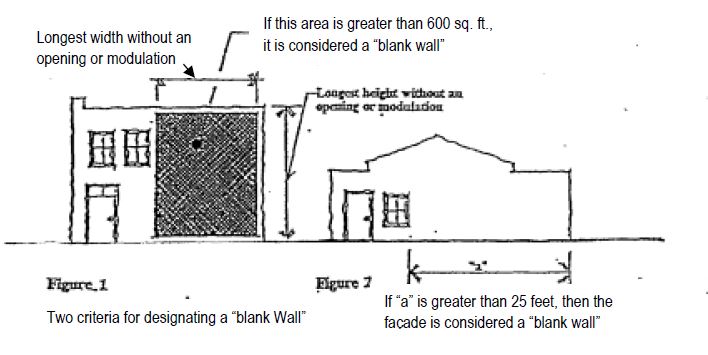
Figure I-19. Within 20 feet of the street right-of-way, any portion of a wall that has a surface area of 600 square feet or more without a window, door, or building modulation. Alternatively, any ground level wall over four feet in height that is longer than 25 feet in length, measured horizontally (“a”).
(Ord. 737 § 2 (Att. A), 2022)



